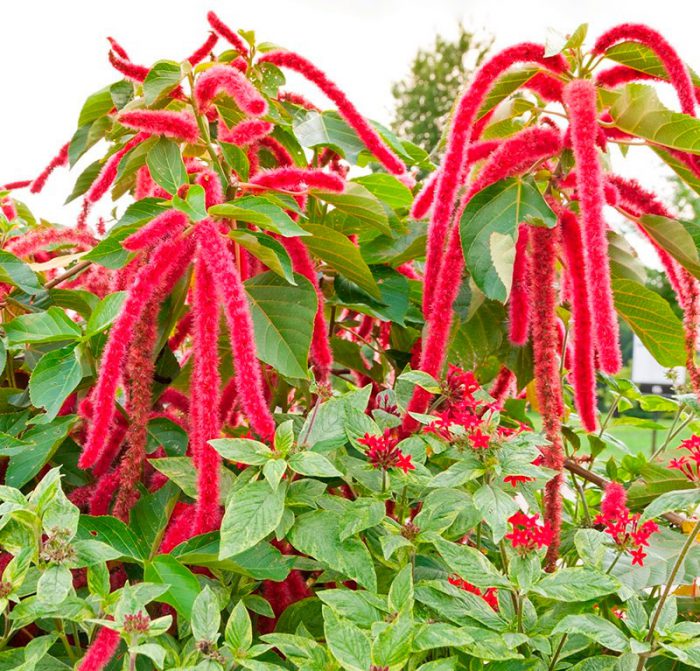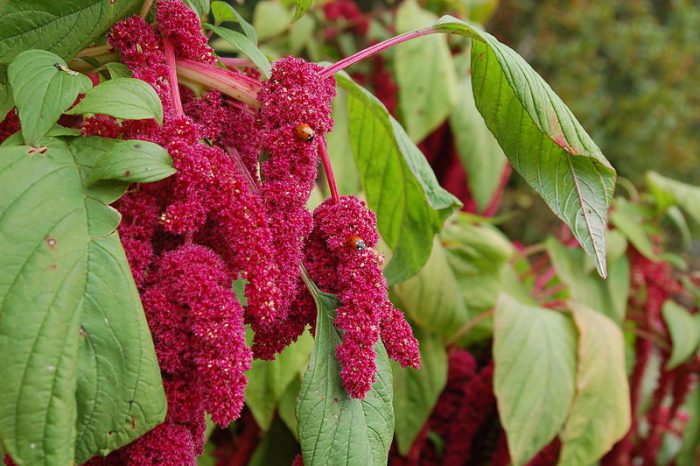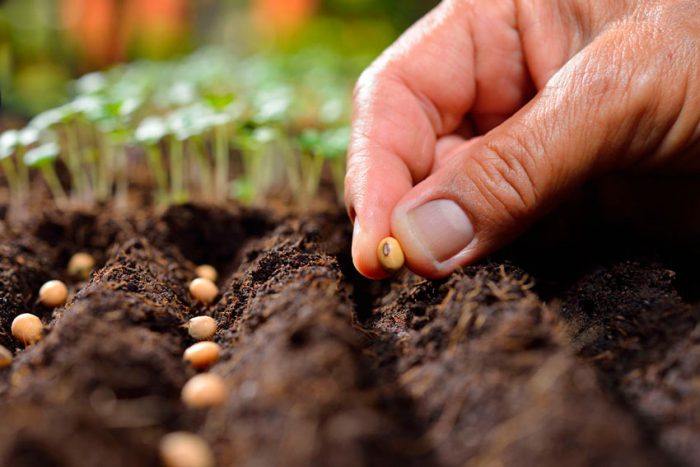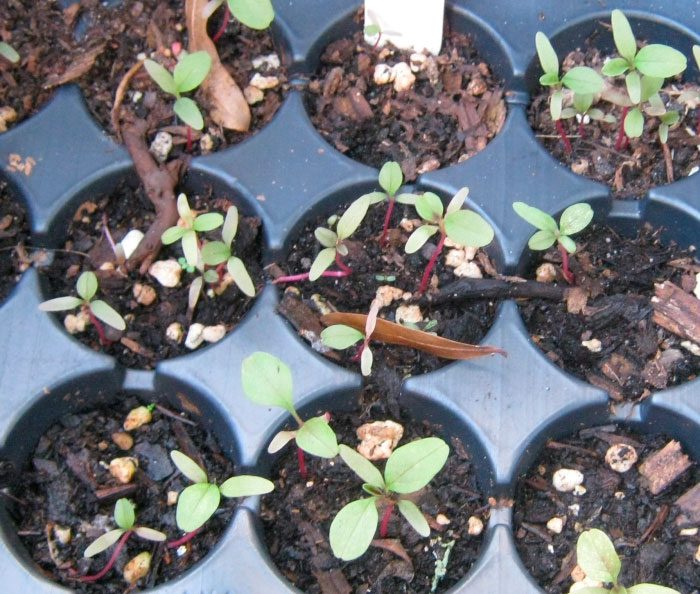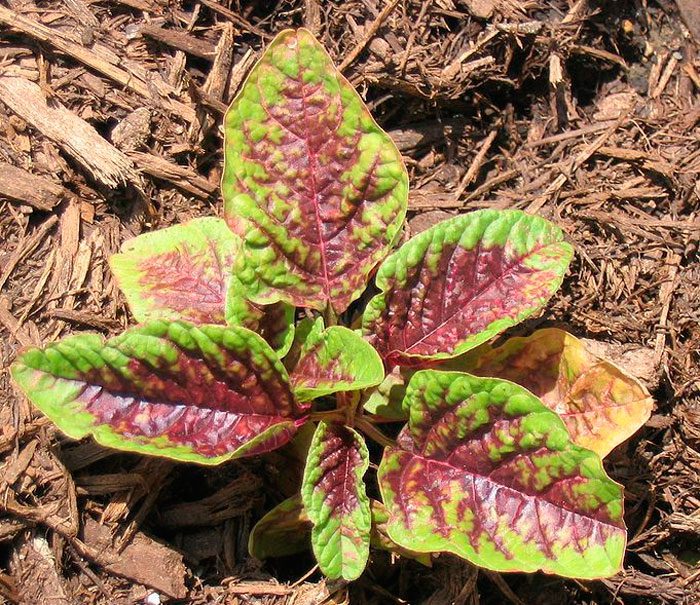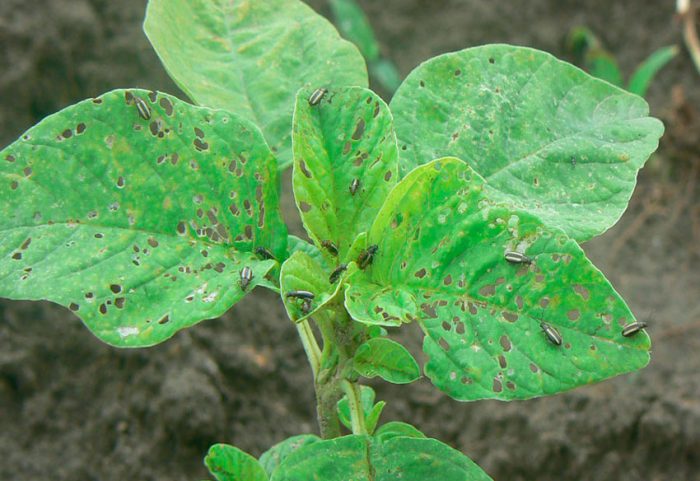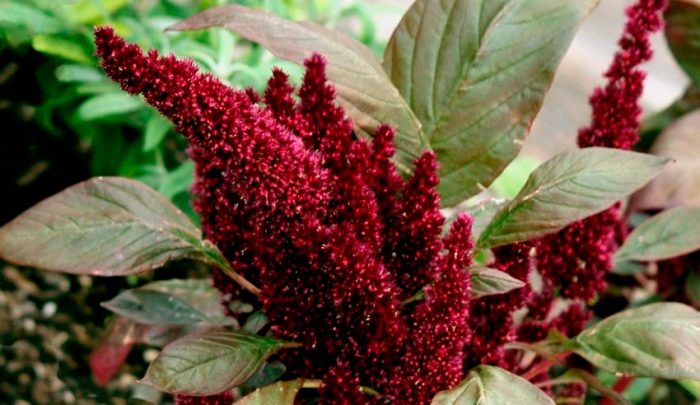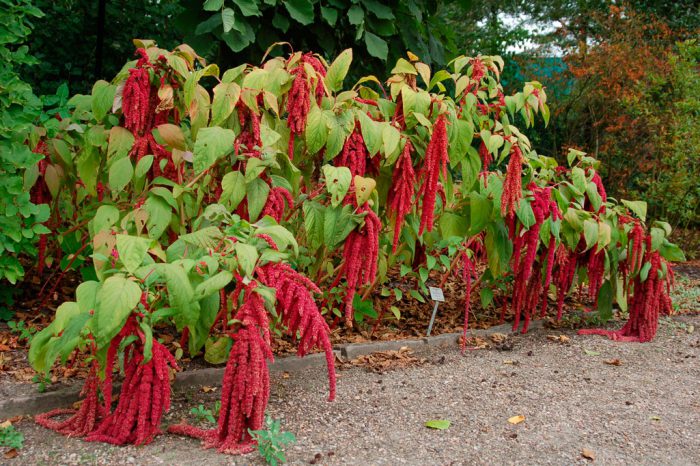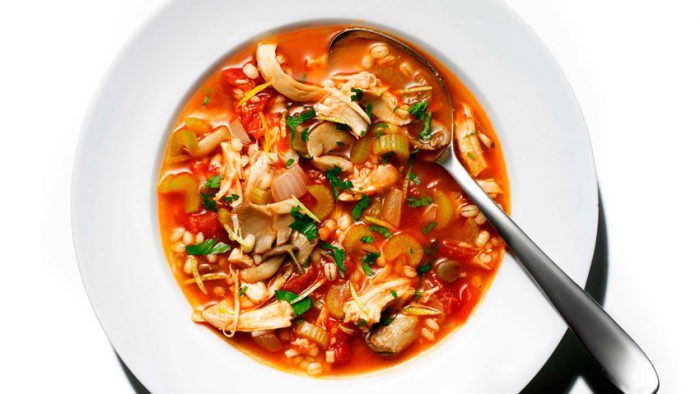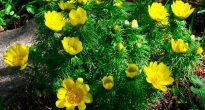A plant such as amaranth (Amaranthus) is also called shiritsa, and it belongs to the genus of the amaranth family. In natural conditions, it can be found in India, America and China. Amaranth tricolor in East Asia is grown as a vegetable. At the same time, this species, together with sad and tailed amaranth, is often grown as an ornamental plant. 8 thousand years ago, such a plant as beans and corn became the main grain crop of the people who lived in the territory where South America and Mexico are now, or rather, the Aztecs and Incas. There are species that today are also grown as cereals, for example, paniculate or tailed amaranth. And there are those that are considered weeds, for example, amaranth thrown back or bluish. The plant got to European countries thanks to the Spanish sailors. At first, it was used only for decorative purposes, but since the 18th century amaranth began to grow as a cereal or fodder crop. The Greek word "amaranth" in translation means "unfading flower". In Russia, this plant is often referred to as an aksamitnik, a cat's tail, a squid, a cock's comb, and also a velvet.
Content
Features of amaranth
Shoots of this plant are simple or branched. Alternate solid leaf plates can be ovoid, lanceolate, or rhomboid. The base of the leaf is elongated into a petiole, while the top of the plate has a notch and a small sharpening. Axillary flowers are collected in bunches, they can be colored red, purple, golden or green. The apical flowers are part of the ear-shaped panicles. The fruit is represented by a box with small seeds inside. The color of the plant itself can be purple, green or purple, but there are species in which amaranth combines all these color shades at once. The height of this plant varies from 30 to 300 centimeters (depending on the species). In mid-latitudes, it is grown as an annual plant.
Growing amaranth from seeds
Sowing
It is very easy to grow such a flower. In some areas, sowing directly into open soil can be done already in the last days of April, but the soil must be warmed up to 10 degrees to a depth of 4 to 5 centimeters. However, before proceeding with sowing, it is necessary to prepare the site; for this, during digging, it is necessary to add a mineral mixture (for 1 m2 about 30 grams of substance), or you can use a complex fertilizer, following the instructions attached to it. It is necessary to feed the plant in moderation. The fact is that a large amount of nitrogen fertilizers contributes to the fact that nitrites appear in the flower, which pose a danger to human health. In the event that the sowing of seeds is done in a timely manner, the amaranth will begin to grow rapidly and drown out weeds, so it will not need to be weeded. For sowing in moist soil, grooves are made and seeds are laid in them, while they need to be buried only one and a half centimeters. To make it more convenient, you can mix small seeds with sawdust or plain sand (1:20), which will greatly facilitate sowing. The distance between the rows should be about 45 centimeters, while the distance between the bushes should be from 7 to 10 centimeters. In this regard, flower growers with enough experience advise not to mix the seeds with anything when sowing, but to lay them out one by one. After about 1–1.5 weeks, the first seedlings will appear, after which it will be necessary to thin out, if necessary, and loosen the soil surface between the bushes. If the sowing was carried out in May, then it will also be necessary to pull out the weed. After the height of the bush is 20 centimeters, it must be fed with nitrogen-containing fertilizer, but at the same time ½ part of the dose recommended on the package is taken. It does not matter for what purpose you grow this plant, it will reach full maturity only 3–3.5 months after sowing.
Seedling
If you wish, you can grow amaranth through seedlings, which is quite simple to do. Sowing seeds for seedlings is carried out in the last days of March. For sowing, you can use ordinary plastic containers or simple pots, reaching a height of 10 centimeters. Sowing is carried out in moistened soil, while the seeds are buried by 15–20 mm. After that, the container is transferred to a well-lit warm place. It is necessary to water the crops with a spray bottle, while the seedlings will appear the fastest if the air temperature is 22 degrees. If everything is done correctly, then you will see the first seedlings after 7 days. After the shoots appear, thinning must be done, while weak shoots must be removed. A pick in individual pots (12 centimeters in diameter) is performed when the plants have 3 real leaves.
Landing in open ground
What time to plant
After the soil warms up well, and the frosts are left behind, it will be necessary to transplant the seedlings into open soil. As a rule, this time falls in the middle or last days of May. The site for planting should be sunny and well-drained, while the soil should be light, rich in nutrients and with the necessary amount of lime. Such a plant is quite unpretentious, but it should be borne in mind that it is afraid of frost, and overflow should also be avoided. Before you start planting, you need to fertilize the soil by adding nitroammofosk to it for digging (20 grams of substance per 1 square meter).
Disembarkation
The distance between plants depends on the species and the variety. So, between the rows you need to leave 45–70 centimeters, and between the bushes - 10–30 centimeters. The planted plants will need to be watered regularly until they get sick and start growing. In case of freezing, the plants must be covered.
Care features
It is necessary to take care of such a plant only until it grows up.In the first four weeks, the planted plants are characterized by slow growth and development, and therefore they must be watered, weeded and loosened on time. Then amaranths begin to grow and develop several times faster, and drown out the weeds. In some cases, such a flower can grow by 7 cm in 24 hours. The grown plant no longer needs to be watered, since its root system deepens into the ground and produces water for itself there. But in case of prolonged drought, amaranth needs watering.
For 1 season, such flowers must be fed 3 or 4 times. For these purposes, it is recommended to use a solution of ash (200 grams per bucket of water) or mullein (1 part of the substance to 5 parts of water). It is necessary to feed amaranth early in the morning, while the site must be watered first.
Diseases and pests
It is very easy to grow amaranth, plus it is highly resistant to various harmful insects and diseases. But in some cases, a weevil or aphid can settle on it. The development of weevils larvae occurs inside the shoots, so the flower begins to lag behind in growth. Aphids can only harm a young specimen, and this most often happens when the summer period is rather rainy. You can get rid of aphids and weevils with the help of Karbofos (Fufanon) or Actellik.
When the soil is oversaturated with moisture, this can provoke the development of fungal diseases. In order to cure a plant, it must be treated with fungicidal agents, for example: copper sulfate, colloidal sulfur, copper oxychloride and other similar preparations.
After flowering
Seed collection
Choose the largest specimens from which you will harvest the seeds. You do not need to cut foliage from them. After the leaf plates below turn red, dry and die off, and the stem acquires a whitish hue, you can start collecting seeds. To do this, on a dry sunny day, you need to cut off inflorescences from these bushes, while you need to start from the bottom of the shoot. Then the inflorescences are removed to a dry ventilated room in order for them to dry out. After half a month, the dried inflorescences need to be rubbed with your hands, while all the seeds will fall out of them. Collect and sift using a fine sieve. They should be stored in a paper bag or box. Such seeds retain a high percentage of germination for 5 years.
Wintering
In middle latitudes, this flower is not able to survive, even if the winter is relatively warm, therefore it is grown as an annual. When the period of active growth is over, the remnants of flowers must be raked up and destroyed. In the event that the plants were absolutely healthy, then their remains are quite suitable for laying in a compost pit. Also, all parts of amaranth, except for the roots, can be given to pigs and poultry as feed. The fact is that such a plant contains protein, a large amount of carotene, protein and vitamin C.


Watch this video on YouTube
Main varieties and species with photos and names
Amaranth paniculata, or crimson (Amaranthus paniculatus = Amaranthus cruentus)
Often they are used to decorate flower beds, and are also used for cutting and for assembling bouquets, both ordinary and winter. In height, such an annual can reach 75-150 centimeters. The leaf plates are oblong-ovoid, brown-red in color, their apex is elongated. Small red flowers are part of erect inflorescences. Flowering begins in June and lasts until the first frost. It has been cultivated since 1798. There are several forms:
- nana - undersized form, the height of the bush does not exceed half a meter;
- cruentus - drooping inflorescences consist of red flowers;
- sanguineus - inflorescences are arranged vertically and have hanging tips.
The most popular are low-growing varieties, the height of which is from 25 to 40 centimeters:
- Roter Paris and Roter Dam - bush height from 50 to 60 centimeters, leaf plates are dark red, and flowers are maroon.
- Grunefakel and Zwergfakel - the height of the bush is no more than 35 centimeters, with inflorescences of dark green and purple color, respectively.
- Hot Biscuit is the highest grade, so a bush can reach 100 centimeters. The inflorescences are orange-red, and the leaves are green.
Amaranth dark, or sad (Amaranthus hypochondriacus)
This species is small-branched, and its average height is about 150 centimeters. The pointed leaf plates have an oblong-lanceolate shape, and they are painted in green-purple or purple. Vertically arranged inflorescences have the shape of spike-shaped panicles. They can be of various colors, but the most common are dark red. It has been cultivated since 1548. There is a blood-red form called sanguineus, which has hanging inflorescences. Varieties:
- Pigmy Torch - the bush reaches a height of 60 centimeters. The inflorescences are dark purple, but in the autumn they change their color to chestnut, while the leaves become multi-colored.
- Green Tamb - the height of the bush is about 40 centimeters. The color is a mixture of various tones of the emerald hue. They are often used to form dry bouquets.
Amaranth tricolor (Amaranthus tricolor)
This amaranth is decorative leafy. The height of the bush can vary from 0.7 to 1.5 meters. Shoots are erect, they form a pyramidal bush. The leaf plates are elongated, they are narrow or ovoid, sometimes wavy. Their color consists of 3 colors, namely green, yellow and red. Young foliage is very showy and has a rich color. Flowering lasts from early summer until the first frost. There are several varieties:
- willow (salicifolius) - narrow wavy leaf plates are painted in a greenish-bronze color, their length is 20 centimeters, and their width is 0.5 centimeters;
- red-green (rubriviridis) - leaf plates of a violet-ruby color, there are specks of green on them;
- red (ruber) - blood-red leaf plates;
- bright (splendens) - there are brown specks on dark green leaf plates.
Popular varieties:
- Illumination - a strong bush reaches a height of 0.7 m. The leaves are large and very beautiful. Young foliage has a yellowish-red color, more mature foliage is orange-red, and the underneath is a bronze tint.
- Aurora - the apical leaf plates are wavy and painted in yellow-golden color.
- Earley Splender - the apical leaf plates of a rich crimson color, while the lower ones are almost black with a greenish-purple tint.
Amaranth caudatus (Amaranthus caudatus)
Under natural conditions, it is found in tropical regions of Asia, Africa and South America. Strong erect shoots can reach a height of 150 centimeters. Large, oblong-ovoid leaf plates are colored greenish-purple or green. Small flowers can be greenish yellow, dark red or crimson. They are part of the glomeruli of a spherical shape. And these glomeruli are collected in long hanging paniculate inflorescences. Flowering is observed from early summer until October. It has been cultivated since 1568. There are several forms:
- white - whitish green flowers;
- green - inflorescences are light green, this form is popular among florists;
- bead-shaped - the flowers are collected in a whorl, and they are very similar to the long beads that were strung on the shoot.
Popular varieties:
- Rothschwants - the color of the inflorescences is red.
- Grunschwants - the color of the inflorescences is pale green.
These 2 varieties have a bush about 75 centimeters high. The plant is quite powerful and large.
The benefits and harms of amaranth
Many scientists call amaranth a plant of the 21st century, believing that it can both cure and feed all of humanity. Of course, this was not without exaggeration. However, any of the plant parts can be eaten, they are very nutritious and useful.Amaranth seeds are most appreciated. The composition of such a plant includes a complex of fatty acids necessary for the human body, for example: stearic, oleic, linoleic and palmitic. Therefore, amaranth is used in the manufacture of dietary products. It also contains squalene, vitamins B, C, D, P and E, rutin, carotene, steroids, bile and pantothenic acid, etc.
If you compare amaranth foliage with spinach, then they have almost the same amount of nutrients. However, amaranth has a lot more quality protein. This protein contains an amino acid that is very useful for the human body - lysine. In terms of its content, amaranth is only slightly inferior to soy, but at the same time the protein from amaranth is more rapidly digestible, compared to the same substance contained in wheat, soy or corn. The Japanese believe that the greens of such a plant are very similar to squid meat. With its daily use in food, the body will be energized and rejuvenated.
You can eat the foliage of both a vegetable and an ornamental plant, which also has a huge amount of proteins, vitamins and useful trace elements. But at the same time, seeds of decorative forms are not recommended for use in food. Ornamental and medicinal species can be very easily distinguished from each other by their seeds. So, in ornamental plants, they are somewhat darker than in vegetables.
The oil of such a plant is valued above all other vegetable oils. So it surpasses sea buckthorn oil in its healing powers by 2 times. Masks and creams with this oil tone up, rejuvenate the skin and protect against pathogenic bacteria.
If the seeds are germinated, then their composition is close to that of a woman who is breastfeeding. They are often used in medicine and in cooking.
Tea made from amaranth foliage can help cope with atherosclerosis, dysbiosis, obesity and neurosis. Foliage and seeds have a beneficial effect on the condition of the kidneys and liver, help to cure adenoma, diseases of the heart and blood vessels, and eliminate inflammation in the urinary system. If you eat amaranth daily, then it will help not only to significantly increase the body's defenses, but also to cope with such a disease as cancer.
Amaranth leaves can be added to vegetable salads in the summer. Flour is prepared from the seeds of the plant, which can be combined with wheat. This mixture produces high quality bread and pastries, while amaranth slows down its hardening. If the seeds are roasted, they will acquire a nutty flavor. They can be used as a topping for buns and as a breading for meat. If, when pickling cucumbers, add 1 leaf plate of the plant to a 3-liter jar, then the vegetables will retain their elasticity, will be tasty and crispy for a very long time.
Amaranth recipes
Nut dessert with amaranth
In a bowl, combine butter and honey and heat well over low heat with systematic stirring. Add your favorite nuts and amaranth seeds. Stir well and pour the mixture into the mold. When the dessert has cooled down, it must be cut into pieces.
Salad
You will need 200 grams of nettle and amaranth foliage and 50 grams of leaves of wild garlic or winter garlic. Scald greens with freshly boiled water, chop with a knife. Add salt, sour cream, or vegetable oil.
Sauce
Boil 300 grams of cream and add about 200 grams of finely chopped amaranth greens to it. Grate 100 grams of soft cheese and add to the resulting sauce, add pepper. With constant stirring, wait for the cheese to melt, while the heat should be low.
Cypriot soup
1 tbsp. chickpeas should be poured with water and left overnight. In the morning, the chickpeas need to be cooked until tender. Chopped carrots and onions should be lightly fried, put in a saucepan where the chickpeas are boiled, and mix everything with a blender. ½ part of a glass of amaranth seeds must be boiled in a separate container. They should boil for 25 minutes.After they are poured into the resulting puree soup, sweet corn (canned or frozen), pepper and 2 large tablespoons of lemon juice are put there. Boil the soup.
Oddly enough, but amaranth cannot harm the human body.

